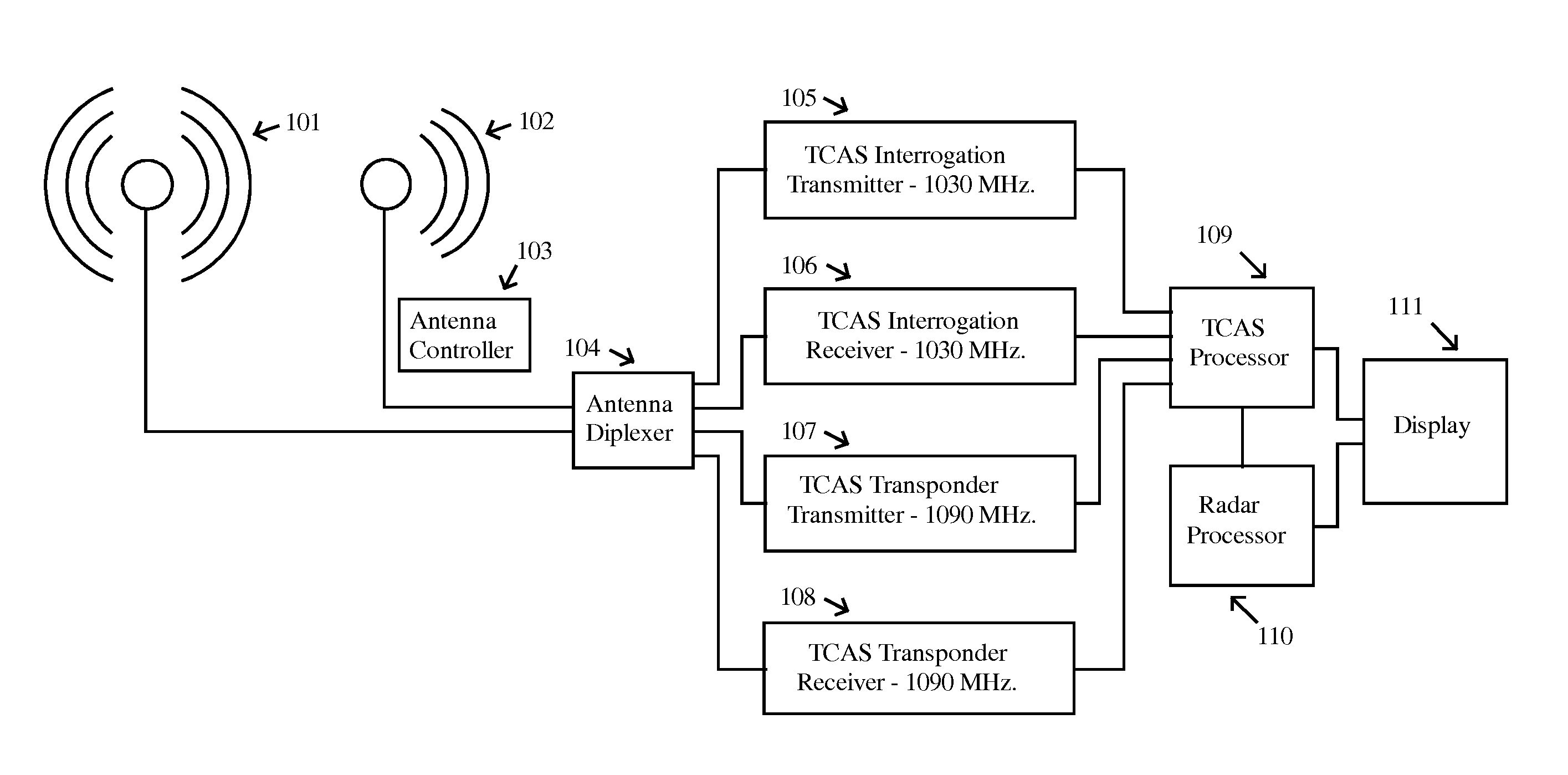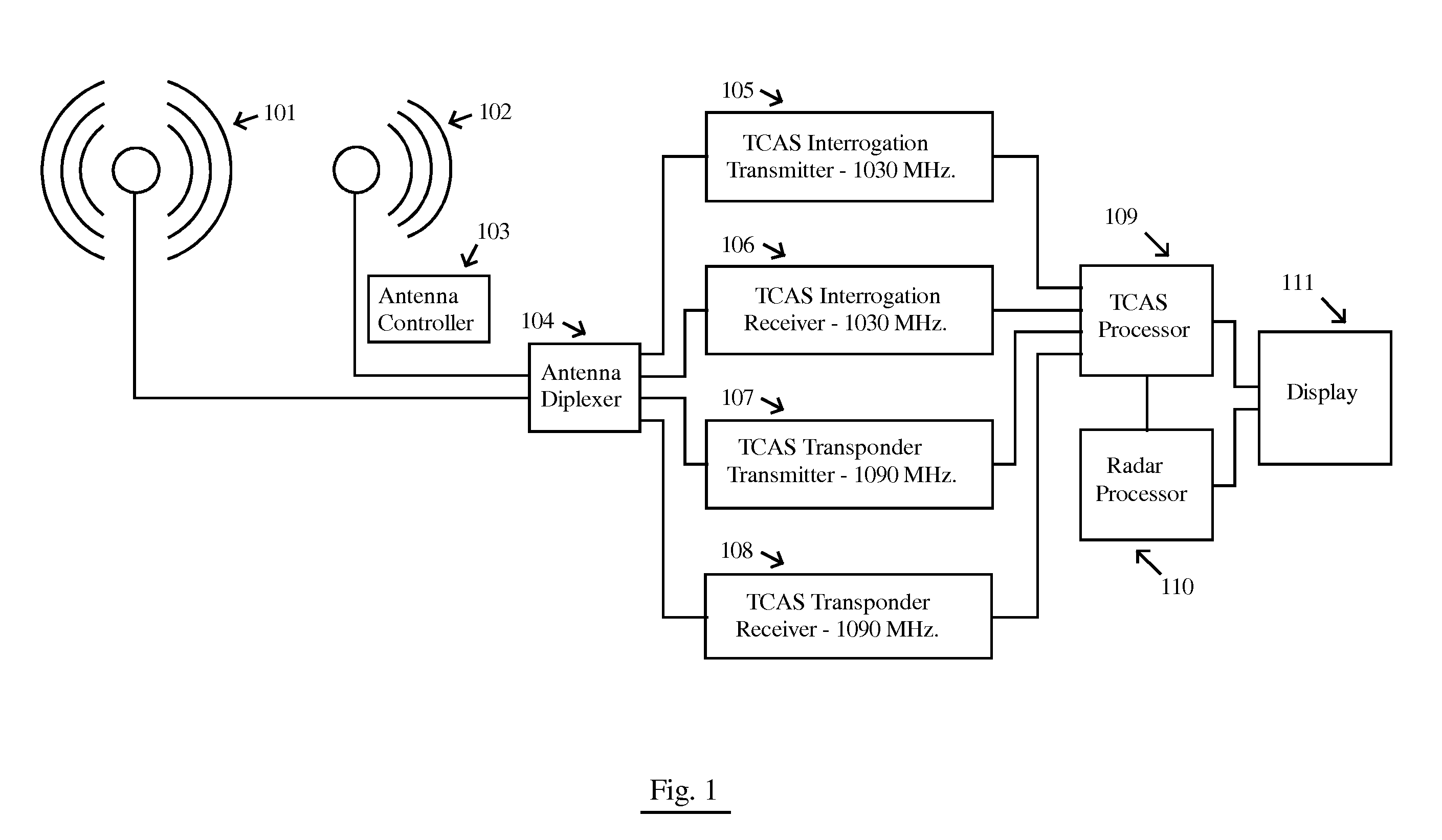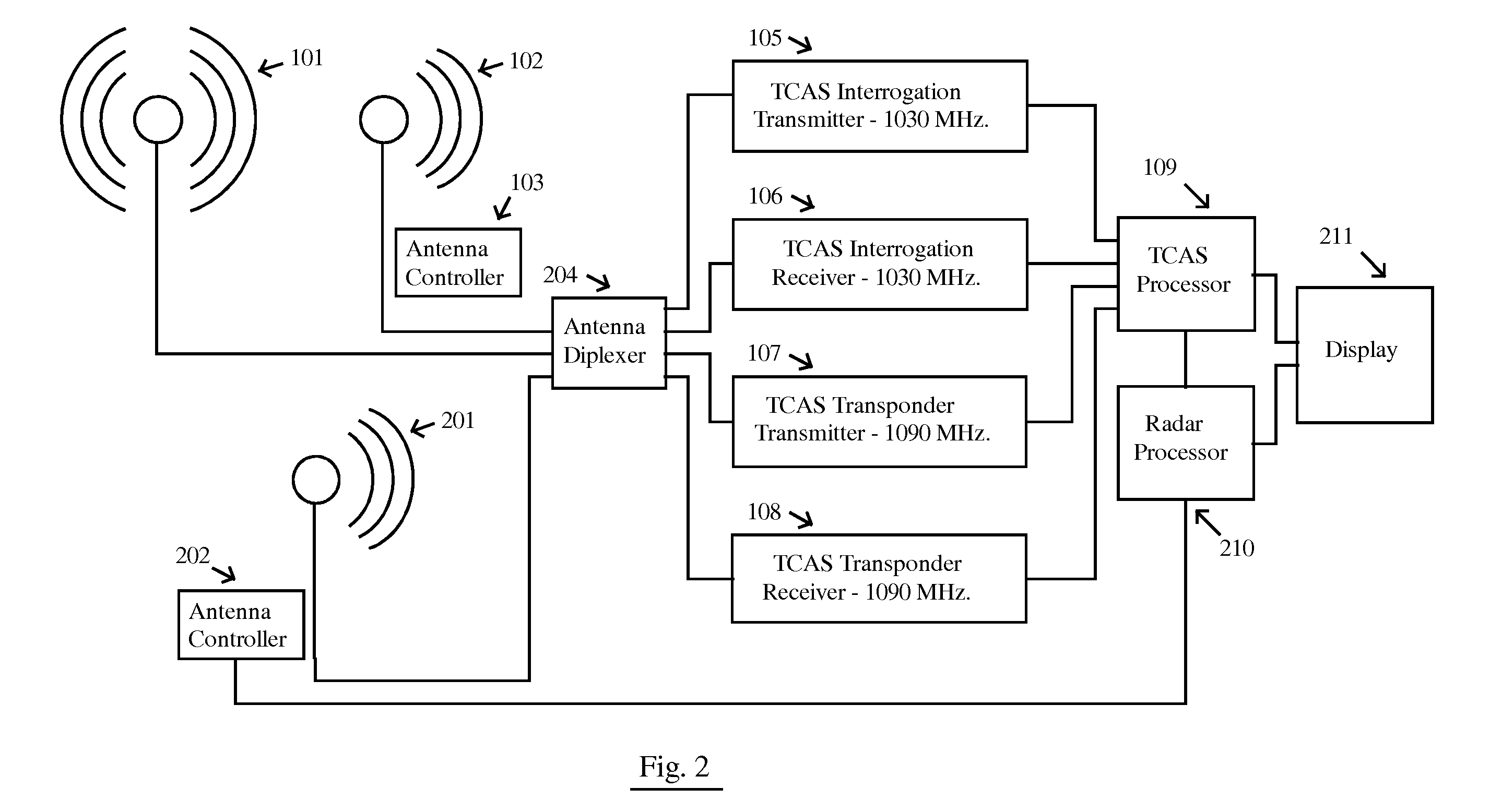System for sensing aircraft and other objects
- Summary
- Abstract
- Description
- Claims
- Application Information
AI Technical Summary
Benefits of technology
Problems solved by technology
Method used
Image
Examples
Embodiment Construction
[0122]In the following description, numerous specific details are set forth to provide a thorough understanding of the invention. However, it is understood that the invention may be practiced without these specific details. In other instances well-known circuits, structures, and techniques have not been shown in detail in order not to obscure the invention.
[0123]FIG. 1 is a general illustration showing a TCAS system used as a radar, using standard TCAS antennas. TCAS Interrogation Receiver 106 listens for Interrogation signals from other aircraft. When it receives one, TCAS Transponder Transmitter 107 sends out a signal containing the unique ID number of the aircraft and its altitude. TCAS Interrogation Transmitter 105 periodically (and randomly) sends out an Interrogation signal that other TCAS-equipped aircraft respond to. These transponder responses are received by TCAS Transponder Receiver 108. There are at least two antennas: Omni-Directional Antenna 101 and Directional Antenna...
PUM
 Login to View More
Login to View More Abstract
Description
Claims
Application Information
 Login to View More
Login to View More - R&D
- Intellectual Property
- Life Sciences
- Materials
- Tech Scout
- Unparalleled Data Quality
- Higher Quality Content
- 60% Fewer Hallucinations
Browse by: Latest US Patents, China's latest patents, Technical Efficacy Thesaurus, Application Domain, Technology Topic, Popular Technical Reports.
© 2025 PatSnap. All rights reserved.Legal|Privacy policy|Modern Slavery Act Transparency Statement|Sitemap|About US| Contact US: help@patsnap.com



